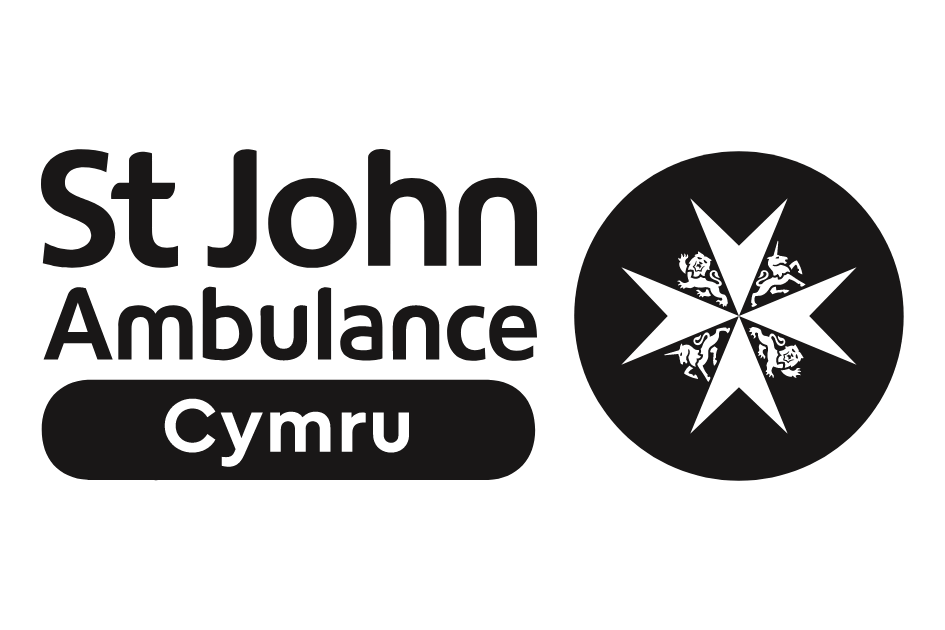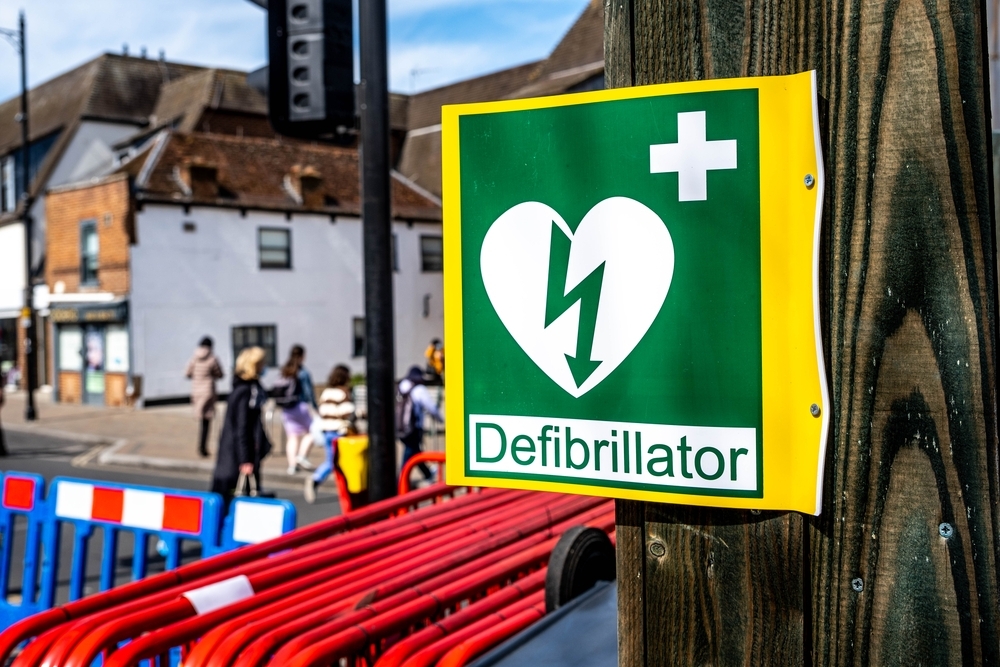
The heart is controlled by electrical impulses, which cause it to beat a rhythm keeping a person alive. During cardiac arrest the normal rhythm is disrupted, which stops the heart beating. This is life-threatening, and for every minute that someone’s in cardiac arrest without receiving CPR and having a defibrillator used on them, their chance of survival decreases by 10%.
A defibrillator is an easy to use piece of equipment which can be used to restore the heart’s normal rhythm. You may also hear them referred to as a defib, an AED (Automated External Defibrillator) or a PAD (Public Access Defibrillator).
The first thing you should always do if you witness someone suffering a cardiac arrest is ensure an ambulanceis called using 999. Thanks to a nationwide defibrillator network called The Circuit, which is a partnership between St John Ambulance Cymru, St John Ambulance England, The British Heart Foundation and the Resuscitation Council UK, the ambulance dispatcher will be able to direct you to your nearest defibrillator, and tell you how to access it.
Darren Murray, St John Ambulance Cymru explains, “We really want people to learn, locate, and donate this Defibruary.
We want to empower people to use a defib, ensure they know where to find one, and then encourage them to donate so that we can continue our lifesaving work across Wales.”
St John Ambulance Cymru has put together a step by step guide to using a defibrillator. If someone around you is showing symptoms of cardiac arrest, call 999 immediately. An operator will tell you where your nearest defibrillator is using The Circuit. If you are acting alone, don’t stop CPR to go in search for a defibrillator. If someone else is available, ask them to find your nearest one. If a defibrillator is locked in a cabinet, your operator will provide a code to unlock this
- Turn the defibrillator on and follow the instructions
- Peel off the sticky pads and attach them to each side of the patient’s chest.
- Whilst the defibrillator automatically analyses the casualty’s heart rhythm, stop CPR and don’t touch the patient.
- The defibrillator will tell you if a shock is needed. If a defibrillator detects a normal heart rhythm it won’t administer a shock so you don’t need to worry about accidentally shocking someone. It may tell you to press the shock button or it may countdown to shock the patient automatically. The defibrillator will give you clear instructions on what to do at this stage. Stand back from the patient during this process.
- Once the shock is given, the defibrillator will tell you to continue CPR for two minutes before it re-analyses. If it tells you that no shock is needed, continue CPR for another two minutes until it re-analyses again.
- Keep this process going until the emergency services arrive. If the patient becomes responsive (coughing / opening eyes / speaking) put them in the recovery position. Leave defibrillator pads attached.
All defibrillators give you clear instructions, no one needs training. But CPR training courses can give you the much needed confidence to act fast.
If you’d like more information about St John Ambulance Cymru, and make a donation towards our lifesaving work throughout Wales please visit our website HERE
